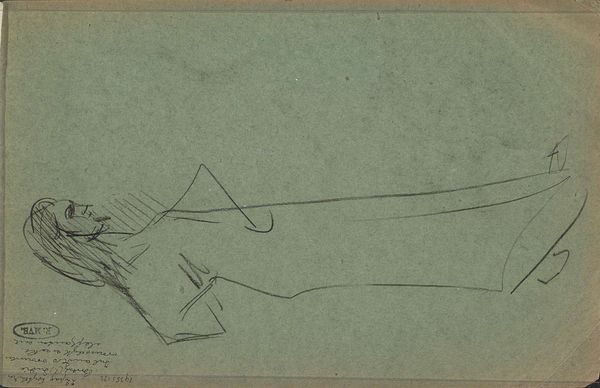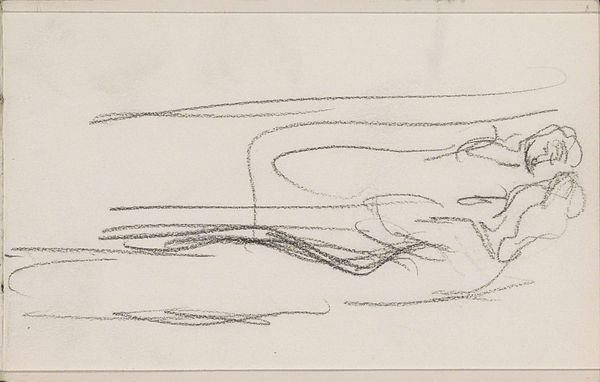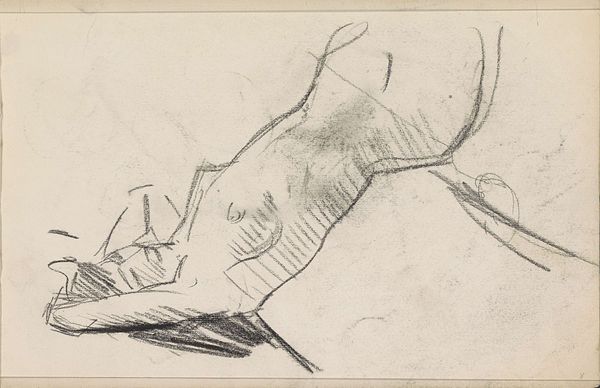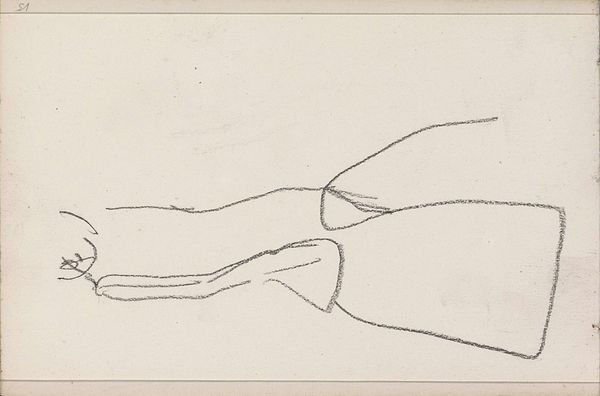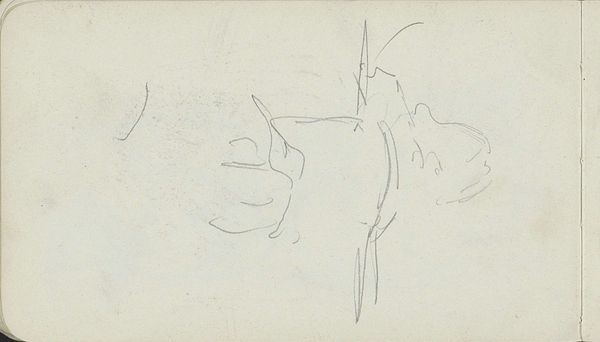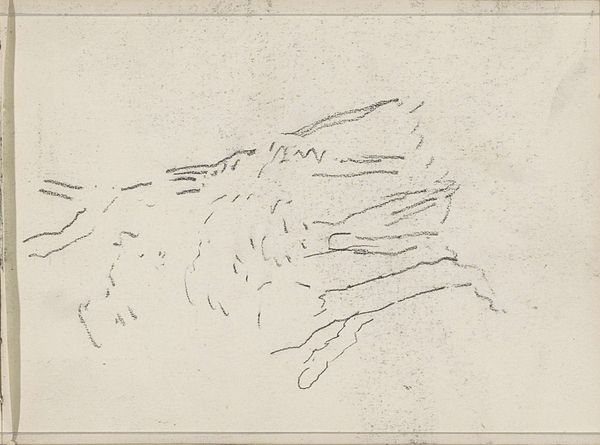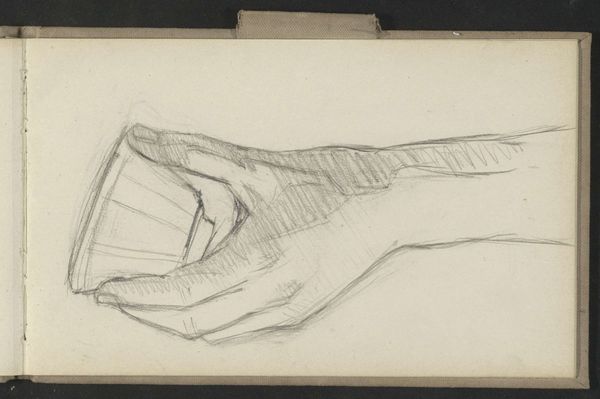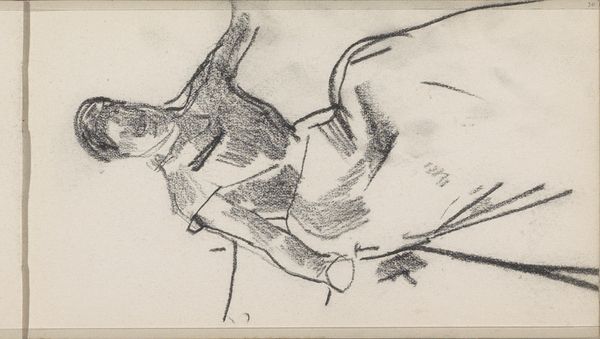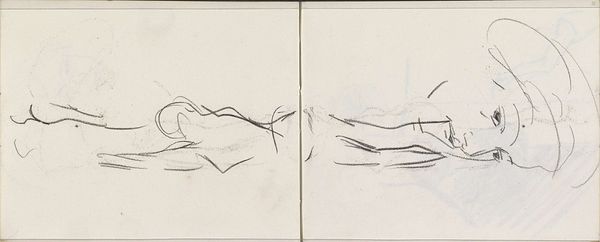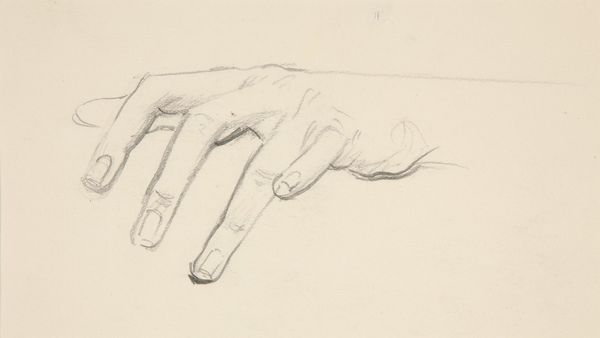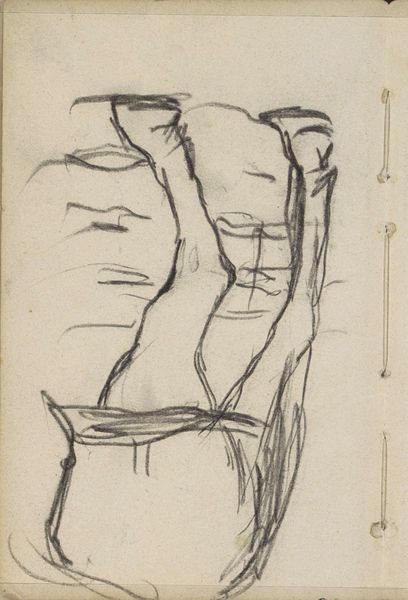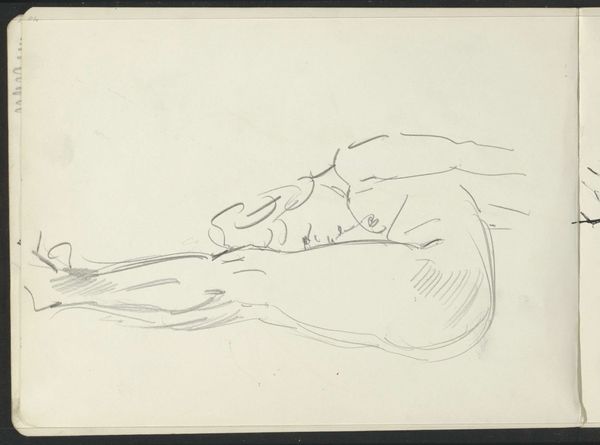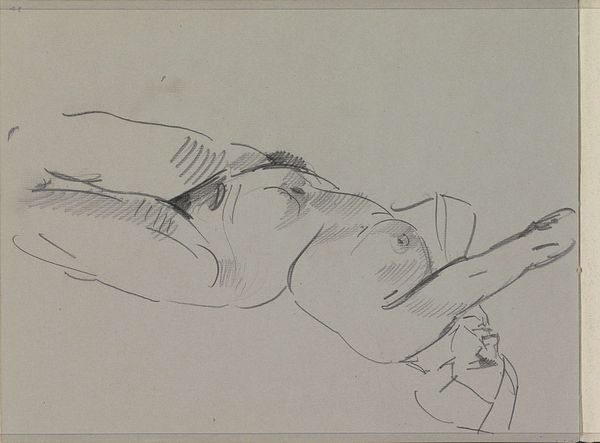
drawing, paper, ink
#
drawing
#
figuration
#
paper
#
ink
Dimensions: 92 mm (height) x 174 mm (width) (bladmaal)
Curator: Looking at this intriguing study from 1919 by Niels Larsen Stevns, titled "Studie af fødderne på Egebjerg-krucifixet," or "Study of the Feet on the Egebjerg Crucifix," done in ink on paper. I immediately feel drawn to it. Editor: There’s a certain starkness. The quick, almost frantic, lines create an undeniable rawness. It suggests suffering, a weight both physical and emotional. Curator: Indeed. Considering the context, that it's a study for a crucifix, that starkness amplifies the broader narratives of sacrifice, power dynamics, and even social injustices inherent in that imagery. We must look beyond a simple biblical story; we see a commentary on systems of oppression, right? Editor: Absolutely, and the positioning of the feet – the crossing, the suggestion of a fixed and perhaps violated pose – speaks volumes about the symbolic subjugation inherent in crucifixion iconography, a posture of enduring persecution. The drawing emphasizes humility through this element, and further emphasizes the pain of being pinned. Curator: Larsen Stevns's choice to focus solely on the feet is also noteworthy. Feet carry us, they connect us to the earth, to reality. In the Christian narrative, these are the feet that walked among the poor, and performed acts of healing. The symbolic inversion of their function, pinned and immobile, transforms them into symbols of powerlessness and suffering. It can also be said this suggests that our modern system crucifies us in smaller, less visible ways through means that go relatively unobserved. Editor: Precisely. I see in it too the echoes of ritualized humiliation from various cultures—the feet bound, constrained, offered in abasement. In the symbol of bound feet we come to reflect not only on crucifixion but other, more commonplace degradations and constraints inflicted by systems. Curator: Thank you. That context really sheds more light. It brings us beyond this work into the larger questions of art history and the complex intersectional nature of historical imagery. Editor: A fascinating image can often point us towards our collective memories, and our persistent stories, for guidance. I appreciate having another moment to ponder the rich symbolism.
Comments
No comments
Be the first to comment and join the conversation on the ultimate creative platform.
